| Revista Umělec 2002/4 >> Interview with Vladimír Skrepl | Lista de todas las ediciones | ||||||||||||
|
|||||||||||||
Interview with Vladimír SkreplRevista Umělec 2002/401.04.2002 Tomáš Pospiszyl, Vladan Šír | q & a | en cs |
|||||||||||||
|
Be an Artist I.
Do you enjoy your art or do you suffer over it? It’s connected, isn’t it? If there wasn’t pain, there’d be no ecstasy. So a kind of SM? Sure, basically that’s it. How did you come to be an artist? (laughs) That is, if I am actually there… That’s also a question. If I am there. Groups You used to played the electric guitar, didn’t you? I started around 12. But that doesn’t mean that I know how to play. I played by reading the notes of some songs. I was made to believe that I can’t sing and, except for a few times in my life, it has stayed with me. I enjoyed making sounds, and big beat was the best - when the band played altogether, the collective sound… And even when you have an understanding with the people, when you encounter the right people whose art and non-art matches your own art and non-art, then it can work. At first it was a kind of special occasion with my friends John and Janeček; we had no name. We performed at Opatov, and then we had to give ourselves a name, so we named ourselves after a pub. But then I played with people who really wanted to play. We performed in youth contests and then it ended. We’d already passed the committee test, but that was in the later pop phase. It didn’t have such a charge. Musicians were changing all the time, and everyone had their opinions. The first phase was the best. It went well. And you played Beatles’ covers? No, we wouldn’t; we would never be able to. Our own creations, no covers. Study Where did you go to school? In Brno. After high school in Jihlava I wanted to get into an art school. In Prague I tried the Academy and Umprum. That must have been awful to apply to those people. . . But really there was no other way, was there? It was awful, but there was no other alternative. Everything was awful, when you look back at it. So I took a look, showed them some drawing, what they wanted, and then also some free work. Yeah and “Jesus Christ…!” the classic reaction, just like at high school when we had problems they confiscated our doodling for, as they claimed, our abnormality or even obscenity. Stabbed Guys? Hmm. That was homework that I successfully got rid of. If ever some of these things were looked up... So I studied history and philosophy and then I switch to ethnography — history of art, which was called “the Science of Visual Arts.” At that time Krsek, Sedlář, Kudelka, Jirka were teaching there. Art interested me, and not the history of art, and we were studying Czech impressionism, Radimský, and so on. It wasn’t my thing. But at school you were also making some work? Well, I was making something… Secretly? Not secretly, but where was I supposed to do it? There were also actions “students perform.” But that seemed over the top to me, when students of history of art show their own art. So that was totally out for me. City Gallery Prague (GHMP) When you played big beat, that’s when you were already working in a gallery? Yes, I was. I started there in 1981. At the beginning of the 80s my first tasks were totally ghastly things, so bad that it was all I could do just to function — Svatopluk Sulek and some Ostrava official art and so on. I had to constantly cheer myself up just to survive it somehow. Generally when I told myself that I would have to go to work for the rest of my life… After high school I went to work in a factory for two years. I learned typesetting in Svoboda in Prague and then I worked in a printing house. There the whole environment was kind of destroying me. Work started at 5:45 and punch clocks, sirens, colleagues, and apprentices; it was demanding. But [in the gallery] they wouldn’t let you do anything properly, would they? Or did you have the chance to research anything for yourself? For me it was important that I could go to Načeradský, Kolíbal, and others and could look at what they had and talk to them. For me, the live information was important, rather than having the desire to research something. I didn’t have that. I wanted to play, do my things, and at work later it also wasn’t necessary to do things that had to be done in the past. Besides that it was good that it was possible to buy something from those interesting people. I didn’t feel much like an art historian, nor like an artist. Artists would say: “Oh yes, this is that art historian.” And that of course would piss me off. I used to tell them: “What about you. You’re learning here from some idiots at the Academy, so you’re one to talk.” Those were those typical statements that stupid artists still make, that “artists should create and not know anything.” It was possible to bring up someone from abroad, some foreign artist who studied the history of art and then made art. But I wouldn’t like to get into that because they usually express themselves very theoretically. To tell you the truth, I was rather glad that I don’t have to say anything to this. Not that I wouldn’t have it thought out, and wasn’t interested in those things, but I no desire to create any programs or to write some studies or present concepts. This was annoying precisely because I’d studied them, so I didn’t like them. And did you ever written anything or put on an exhibition that you think was good? To tell you the truth, I don’t hold onto my memories. I would have to somehow remind myself… I was there until 1986 or 87. And then I was totally sick of art and the gallery and so I left and worked at several obscure jobs for about a year or two and then I came back. Then since 1992 or 93 in the National Gallery and then I went to the Academy to be an assistant to Jiří David. After a long time I put on an exhibition of Sopko at the Town Hall, Načeradský at Opatov. Or rather, they asked me to do it. But then I was already interested in things that were not so possible to exhibit officially: that it was immature, too young and so on. I’d already emancipated myself from the generation of Načeradský, Sopko, Kolíbal, Šimotová not to mention coevals such as Rittstein, Bláha and so on. That was completely out. Why? Weren’t you from the same age group? I wanted to say here that they were closer in their age, but not in their art. Or by their approach to their art. I imagined art naively — I know it sounds stupid — but more as a life style. You were a punk! Well, I wasn’t a punk. I sure didn’t look like one. But in the approach, maybe. But punks at that time had long gone stale. It was such a mixture — I didn’t want to go to the underground but I knew the people. That includes everything. Local punks I knew. Information reached those that had better conditions, so there was no one from the street. At least at the beginning. Such as Energy G, Cajthaml brothers, Matouš Forbelský and others. They were university students. And then me as a “gallery worker.” I don’t like to remember this time, I have to say that it wasn’t my thing. But at the same time it was pretty fast and fun, wasn’t it? If you look at it with the idea that you were young and had energy… I had the feeling that at the end of the 80s there were lots of exhibitions and music groups and it was quite alive and within all the despair there was a lot of fun. You could say that, even though looking back it seems rather dark to me. But that’s the case with almost everything, almost all the time. Trips and Friends Were you ever in the west at that time? I was only in Austria and Italy in 1978. And did you see any art when you were there? I went only to see art, what do you think? Old art. Did you participate in Jazz Section [underground art, music and literature organization in the Czech Republic]? No, but I was a member. I subscribed to the books and so on. Once I was at Folimanka on Czech day. As I vaguely remember, Extempore, Jim Čert, Psí vojáci were there. And many other concerts, things that I soon lost contact with. I also used to go to some backstreet actions such as Debilmentol. These kinds of alternative things, but now when I look back “alternative and rock in opposition” were not interesting to me, I didn’t perceive things that deeply and politically. Who were your friends? Debilments? S: I have a story about Debilmentol. I was somewhere in the outskirts of town and someone gave me a cassette or it was found there, I don’t know. Somehow I got hold of their cassette and in the metro I was looking at it and I found a little packet with some drugs inside. And because I wasn’t experienced I told myself, “Oh, someone’s writing to me, or what…” So I opened it and it spilled out. Anyway, I didn’t know what it was. But I have often remembered how I discovered this thing like such a moron. I had some friends that would go to [various pubs]. They were a mixture of the remainder of the late underground. I was good friends with Martin John and David Janeček, Škrabal and other drunks and longhairs and other types from various circles I never see anymore. Work And when you had the “Pricked Boys,” was it a painting or a drawing? At that time those early things were tempera and watercolor, “drawing paintings.” Maybe we could talk about what a painting is… At the end of the 70s I was making paper objects, influenced by post-minimalism. But they were never exhibited and I moved a million time and was moved out, so I don’t have them. They’re lost. So when did you have your first exhibition? In 1984 in Mala Strana in the flat of someone who’d emigrated. He had a big flat. In one big room Martin John and I made big papers, or rather I did, not having any money or any chance to buy canvas. There are photos and slides of it. It was there for a week. We herded them in to see it… I remember that I went to Šmejkal to get him to come and see it and thanks to Martin John his mother, Adriena Šimotová, also came. It was actually one of the first actions and these kinds of people were coming — old Kafka, Sopko … Of course I didn’t know [Sopko] so well, but in my enthusiasm I said to myself that we are going to show it to these people. If I remember correctly — it’s a little misty — he was making faces and doing that classic thing, even you do it, that: Yes, yes, hm hmm. It was something between underground, dissident and artists from the older generations who could not present their work much so at that time it brought people closer together. Nothing much was happening, and so people came. Undefined and Nameless Writing something about your work is very difficult. It’s hard to assemble any kind of constructions… Do you do this intentionally? Do you mean by that that there are various formal approaches or the content is strange? I have the feeling that every exhibition is very different. You can feel from it that when you put it together that it was done by one person, but it seems to me that there is lot of dispersion. Instead of digging and getting to the one right way, one right approach to your art, on the contrary: you are digging yourself to the periphery; what else could you do and how? Maybe you see it this way but I think that I am still on the path towards something. Of course it looks different, but at the same time it’s a reflection of the way I perceive things. At the same time there is irrationality and I am also informed and I can work somehow with speculations. And this is what I constantly have to deal with, and that will always be there… And can you imagine someone making you a big catalogue, a monograph? What kind of chapters would it have? It’s that you perceive it in such a traditional, historical way. Of course it’s chaotic. There would be parts that would be characterized by certain exhibitions or by one exhibition or by a year, but I think that slowly it would come out that some things permanently appear. And this is the irrational path internally directed, and then the attempt to make some construction that was maybe expressed in geometric abstractions or objects that were somehow constructed. In fact, this is what I now like, or at least in the last few exhibition, they are now this way. When there are various things next to each other: on the one hand, on the wall, pictures or drawings, and then there are some objects and all together it creates a whole environment that is closest to me. I will not make my work into some kind of art historical shapes. Of course I think about it. I have many doubts and sometimes I say to myself that it’s worth shit, and I wonder if it’s even necessary for me to do it, what is it for, I didn’t do enough, and why am I even doing it at all… There are many things that I have to deal with: myself, art, the world… I think that if I was supposed to fulfil the criteria of artists, so that it’s clearly recognizable whose work it is, and so that it had some solidity, then that’s what I don’t want. Up till now I’ve had such freedom that I can do what I want and nobody is interested so much that they push me to do something. When I was talking about the things I have to deal with — I’m all the time interested in how things are created, how I can place them so that, according to me and for me, it makes sense within this thing called art. Maybe only at a certain moment or only in a thing, not that it would constantly grow and grow until “that’s it!” It doesn’t work this way anyway. I feel an impulse, a lot of curiosity about what everything that could be made… No, that’s not it. That sounds too easy. The word curiosity I would not use here at all. If yes, then it’s the curiosity of what I can do, because in that other sense it would mean that I could do anything, but I am not able to make “anything.” And that not only because of technical restrictions, but also because of my constitution so that I could come to terms with it. It’s a different kind of curiosity. Do you usually title your pictures? No. If yes then it was because I was forced to, or on a whim. I prefer not to name them if nothing was written on it, in the same way as with a poem that’s named after the first line. Now I’m putting on no-name exhibitions. There it is sometimes fun, and somehow it works, but it’s started to seem to me that a good title is thought up only because exhibitions are supposed to have titles. Sometimes it’s good when they deal with some problem. Sometimes it’s good, but it’s not necessary. Sometimes I enjoy it, but the titles of exhibitions, they’re something different from the titles of objects or things. Black Joke From your questions I perceive strong distrust and a certain suspicion. It’s possible I am a simple person and I like simple, clear things, but with most of your pictures, I don’t recognize whether they are even good or bad. Whether they are even pictures… That’s also a question. It’s because they’re always opening - and I think that this is why you are important for this scene — some completely different territory whose existence never even occurred to me. And because they are mostly such unexplored regions, I feel completely uncertain there. I don’t know how to approach it. It is the same as with very good black jokes — a person just doesn’t know whether it’s still funny. I can see the headline: “Skrepl’s Black Jokes” (laughs). That’s how it is. In the development I struggle with this a lot. Sources I think there are many German artists that have that discovering instinct… Like Kippenberger. In that sense maybe yes, I like him. I think it’s good that many intellectuals have occupied themselves with his things, but mostly they’ve somehow circled around them, because somehow you cannot get to the center of the thing. And it is said that Kippenberger himself (I heard this secondhand) much of his self-confidence… Well, of course he had it, but at the same time he had big doubts about where he was moving or not moving. Allegedly he had these big fits of despairs. What I like about him is that many of his things are actually not understandable — some objects or that thing with the metro… But the sources are understandable — they are from the places that are interesting to me — from the places of the mind. Pencils and Computer Do you have any fetishes? I don’t have any talismans. The pencil is my favorite fetish, but I don’t insert it up any openings or whatever. And I don’t mean the classic pencil. It could be whatever kind of pencil, pen, marker… Do you draw on the computer? No. I have a computer. I got it from a friend, but I don’t use it very much. Students yes, a lot. With technical problems I definitely don’t give advice, in case you wanted to ask. I miss the physical pressure using the computer. I have nothing against drawing, but then you probably have to have exactly defined what will be there so that you can produce it. I prefer to let myself just get to it somehow and then I am surprised. When I can work with my hands on it. With installations I don’t have this problem; I don’t do them that often and mostly they are of the type when it is not technically demanding and also it’s not always completely the same. I don’t mind it; always there is the work with the space. It is different depending on the connections. Do you sketch out your pictures first? S: I draw a lot. I struggle with it, but rarely do I draw what I want to paint. Sometimes I start with a drawing, but that relationship drawing-picture is very complicated, and it’s not possible to do. A drawing works with different feelings, so then I fight with it. And with these sketches I sometimes make stencils and sometimes I just go directly. You have an archive of drawings at home. Is it for exhibition? S: Yes, it is. I was using it, for example, in combination with some texts — freely attached to the wall or the whole huge wall combined with photos. I always wanted to give it some shape. It’s not an exhibition of drawings. It functions as a whole. To be an artist II. What did you want to be when you were young? I remember that there was a period of time when I wanted to be a veterinarian. It’s not that I was dissecting things… Of course it happened a couple of times. I was at an age when I couldn’t imagine what it takes. It’s just that I loved animals and wanted to help them, in this childlike way. Not that I was looking forward to cutting pigs, putting dogs down, that I certainly wouldn’t want to do. So why didn’t you become a veterinarian then? S: Well I guess I realized what it takes, found out that that’s not it. I recognized it early and then I hadn’t chosen any profession so I decided that I would make art. Even though I probably also couldn’t imagine what it was to be an artist, how to survive and so on. When I was roughly 12 or 13 I discarded the idea… …when you started to play guitar? (laughs) Yes. At least it would sound good: “When I started to play guitar, I found out that I don’t want to become a veterinarian and I decided to become an artist: visual.” That sounds good, doesn’t it? That’s logical! (laugh).
01.04.2002
Artículos recomendados
|
|||||||||||||
|
04.02.2020 10:17
Letošní 50. ročník Art Basel přilákal celkem 93 000 návštěvníků a sběratelů z 80 zemí světa. 290 prémiových galerií představilo umělecká díla od počátku 20. století až po současnost. Hlavní sektor přehlídky, tradičně v prvním patře výstavního prostoru, představil 232 předních galerií z celého světa nabízející umění nejvyšší kvality. Veletrh ukázal vzestupný trend prodeje prostřednictvím galerií jak soukromým sbírkám, tak i institucím. Kromě hlavního veletrhu stály za návštěvu i ty přidružené: Volta, Liste a Photo Basel, k tomu doprovodné programy a výstavy v místních institucích, které kvalitou daleko přesahují hranice města tj. Kunsthalle Basel, Kunstmuseum, Tinguely muzeum nebo Fondation Beyeler.
|







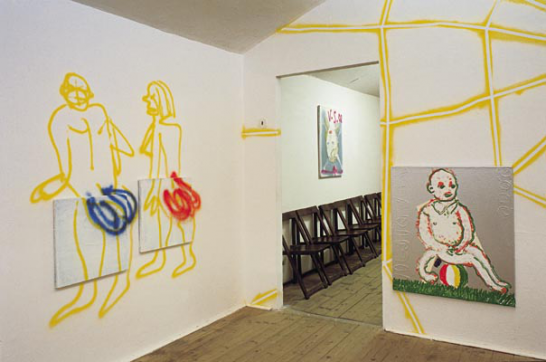










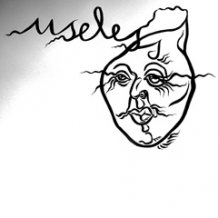











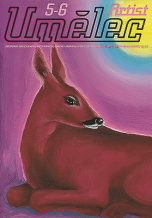
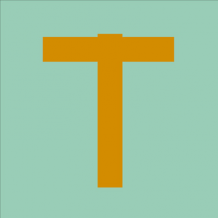
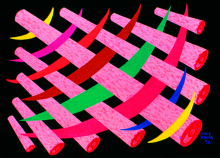
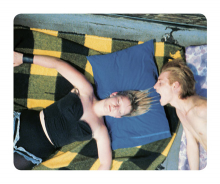


 We Are Rising National Gallery For You! Go to Kyjov by Krásná Lípa no.37.
We Are Rising National Gallery For You! Go to Kyjov by Krásná Lípa no.37.
Comentarios
Actualmente no hay comentariosAgregar nuevo comentario